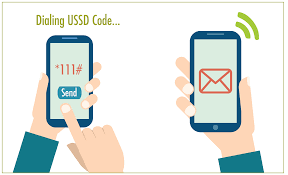Introduction
Convergence USSD Gateway is a bidirectional signaling platform that can route messages between the network and service applications that run on them. Even the most basic mobile phone supports USSD messages. This means that subscribers do not need to download an app or login to a website to get interactive content like balance updates, marketing messages, and notifications like low balance alerts.
Advantages
The advantage of USSD for message delivery and notification is that it is session-based and very efficient. Session-based communications are fast and simple for real-time applications like balance checking, voice chat and advertising. USSD supports process supplementary service (PSSR) and unstructured supplementary service notify (USSN) requests and messages, real-time services like balance checking and voice chat work even when roaming.
USSD has a huge advantage in usage when subscribers are roaming. All USSD messages are directed to the subscriberʼs home network and can be directed to a visiting network enabling a virtual home environment (VHE), which reduces operator costs and greatly improves user experience. Modern 4G/LTE networks support voice chat applications using SIP, USSD-based voice chat application scan work seamlessly and well across older GPRS, 2G and 3G networks, providing the widest possible compatibility footprint for services important to the subscriber.
The Convergence USSD Gateway is built on a fully Open Source server written in Java and strictly adheres to the standards and specifications defined by the International Telecommunications Union (ITU). With full support for virtual machine (VM) and network functions virtualization (NFV) architectures, the Convergence USSD Gateway is very easy to install and deploy in different environments, allowing you start providing interactive messaging and content delivery services with a minimum of support and training.
The Convergence USSD Gateway utilizes Convergence Telecom Core, a modern extensible middleware platform. It provides easy integration with any third party communication protocol or system using industry-standard telecom interfaces including SS7 MAP, TCAP, INAP, or ISUP. USSD Gateway also supports Internet-based communication interfaces and protocols including SIP and HTTP.
The Convergence USSD Gateway provides a scriptable Command Line Interface (CLI) tool allowing you to completely configure the Gateway at run-time and manage it using simple commands. In addition, a Graphical User Interface (GUI) tool is provided to allow you to configure, monitor and manage the Gateway through a convenient user-friendly interface.
USSD Architecture

Features & Benefits
- Multi tenant USSD Gateway enables operators to provide native real-time services and interactive content delivery applications to mobile subscribers with both network push and menu-based interaction across multiple branded services.
- Carrier-grade scalability and reliability with load balancing and clustering support for automated failover delivers an excellent user experience for mobile subscribers.
- Multilingual support for both UCS2 and GSM 7-bit format enables world-wide support for rich content and notifications
- SIGTRAN (M3UA), HTTP and SIP interface support provides industry-standard network integration into IMS and LTE networks.
- On premise and cloud deployment options provide outstanding flexibility for service provider and enterprise applications.
- Flexible Operations and Monitoring support using industry standard protocols including Java JMX and scriptable command line interfaces with full CDR, logging and auditing reporting capabilities.
Active Customers
Afghan Wireless
Convergence developed a USSD Gateway for Afghan Wireless short codes. Afghan Wireless customers can send and receive messages about their web and sms subscriptions.
Digital Bridge
Convergence developed a centralized Gateway Digital Bridge for their commercial service. The system connects over IPSEC VPN from DBL datacenter in Karachi to four MNOs in Pakistan. USSD solution brings calls from all 4 MNO in Pakistan to Digital Bridge central data center in Karachi for onward processing to payment Gateways.


